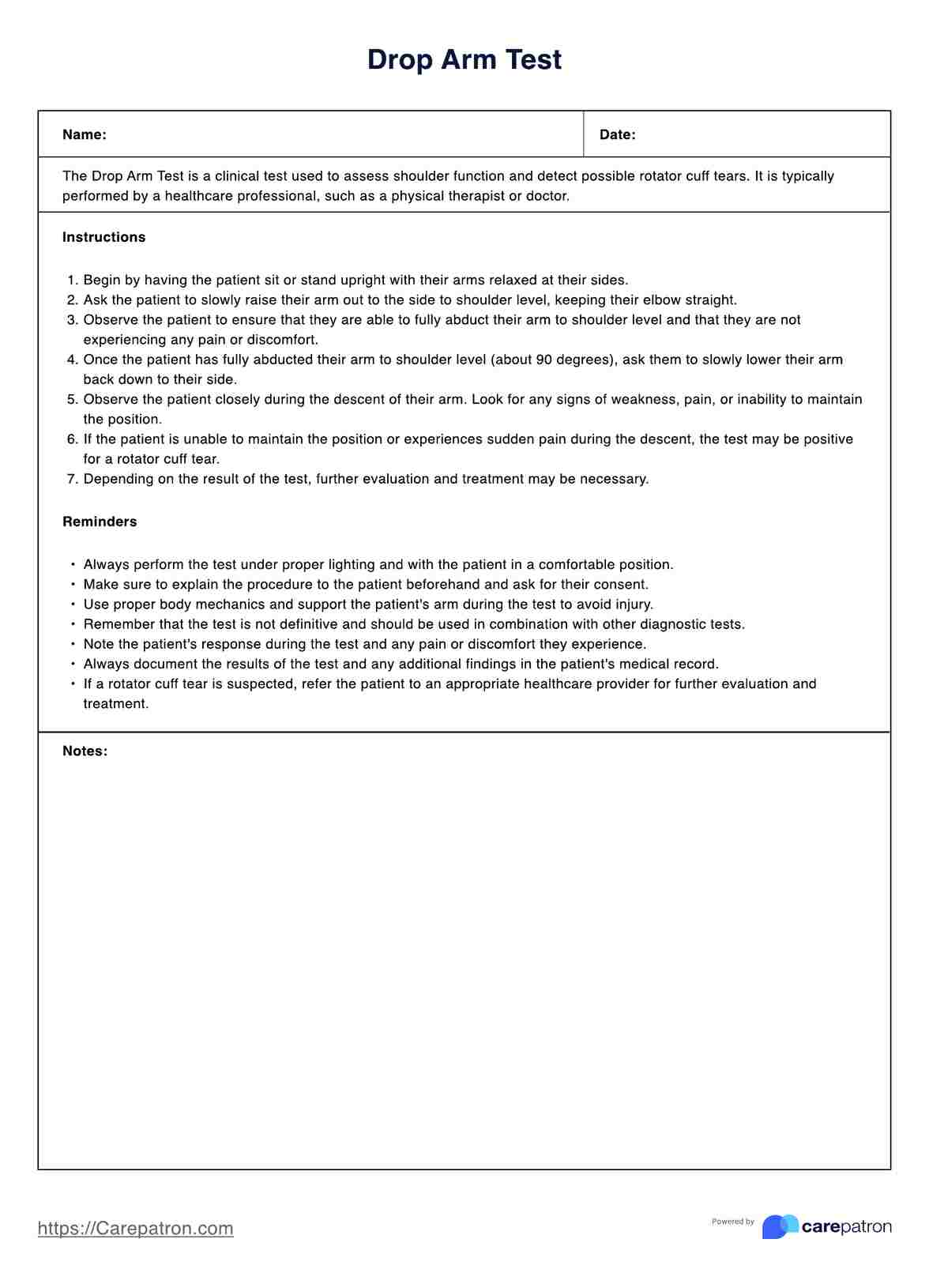To administer the test, ask the patient to raise their affected arm and hold it at a 90-degree angle. Tell them to slowly lower their arm as far as possible and hold for at least 5 seconds. Check for any pain or discomfort during the test and visible signs of shoulder instability.

Drop Arm Test
Discover the Drop Arm Test and how you can use it to assess shoulder instability. Download our free PDF guide and example now!
Drop Arm Test Template
Commonly asked questions
The Drop Arm Test evaluates shoulder stability, range of motion, and flexibility. After performing the test, you can compare the results from both arms to determine if an imbalance exists. If there is a difference in strength, stability, or range of motion between the two arms, this could be an indication of rotator cuff injury.
The Drop Arm Test is a fast and efficient way of evaluating shoulder stability and flexibility. It can help you assess the range of motion, identify imbalances between the two arms, and monitor the healing progress for rotator cuff injury.
EHR and practice management software
Get started for free
*No credit card required
Free
$0/usd
Unlimited clients
Telehealth
1GB of storage
Client portal text
Automated billing and online payments











